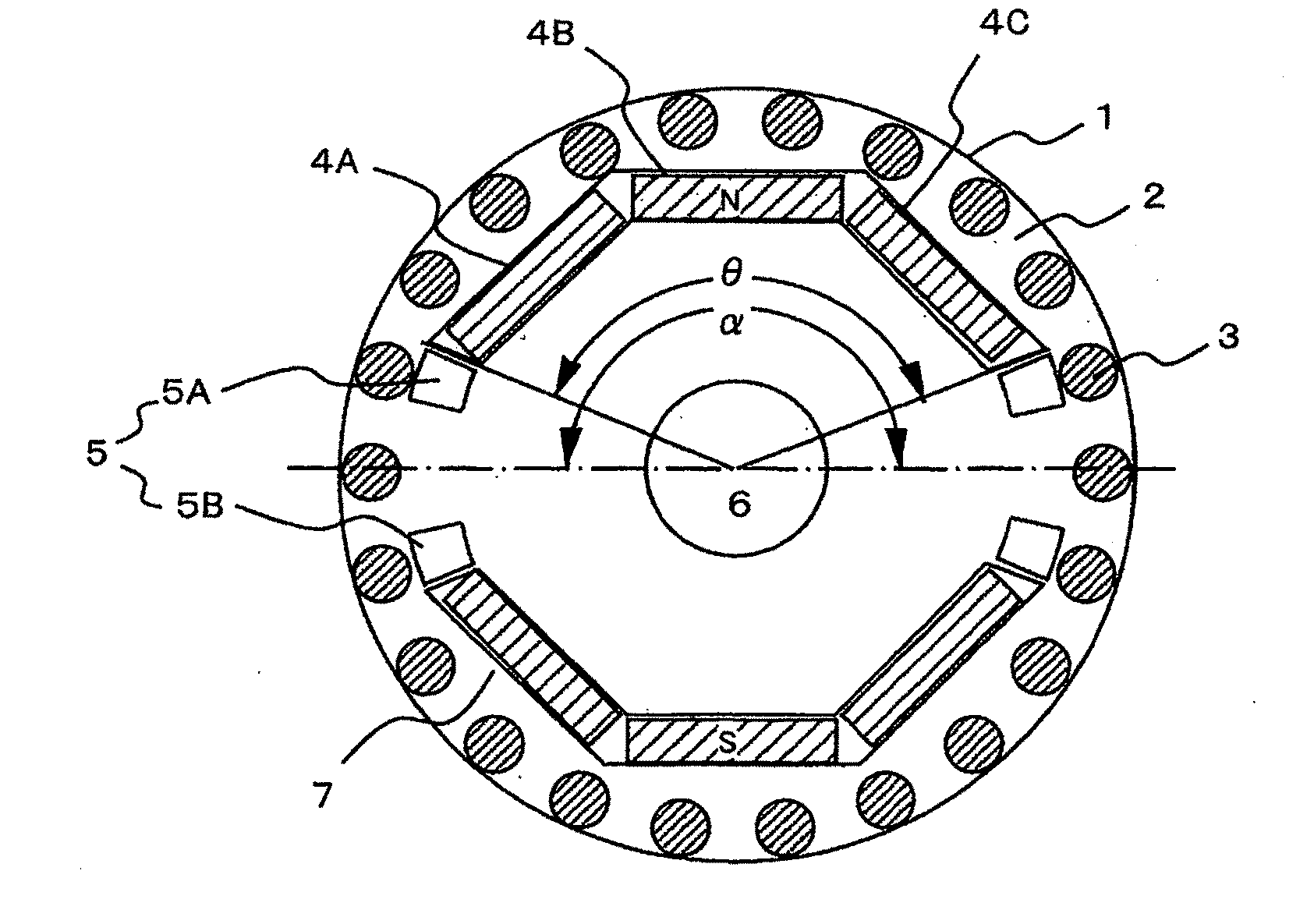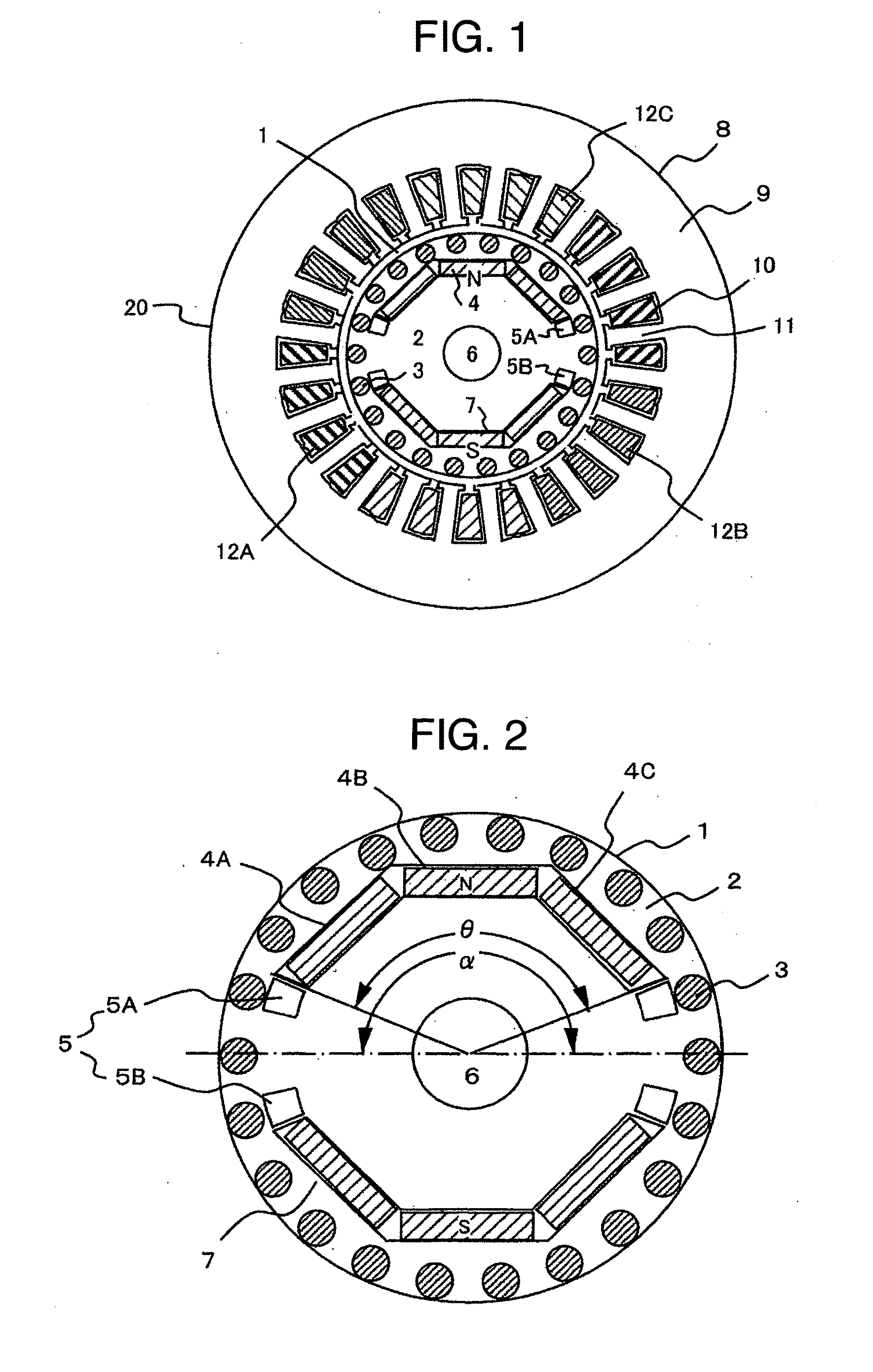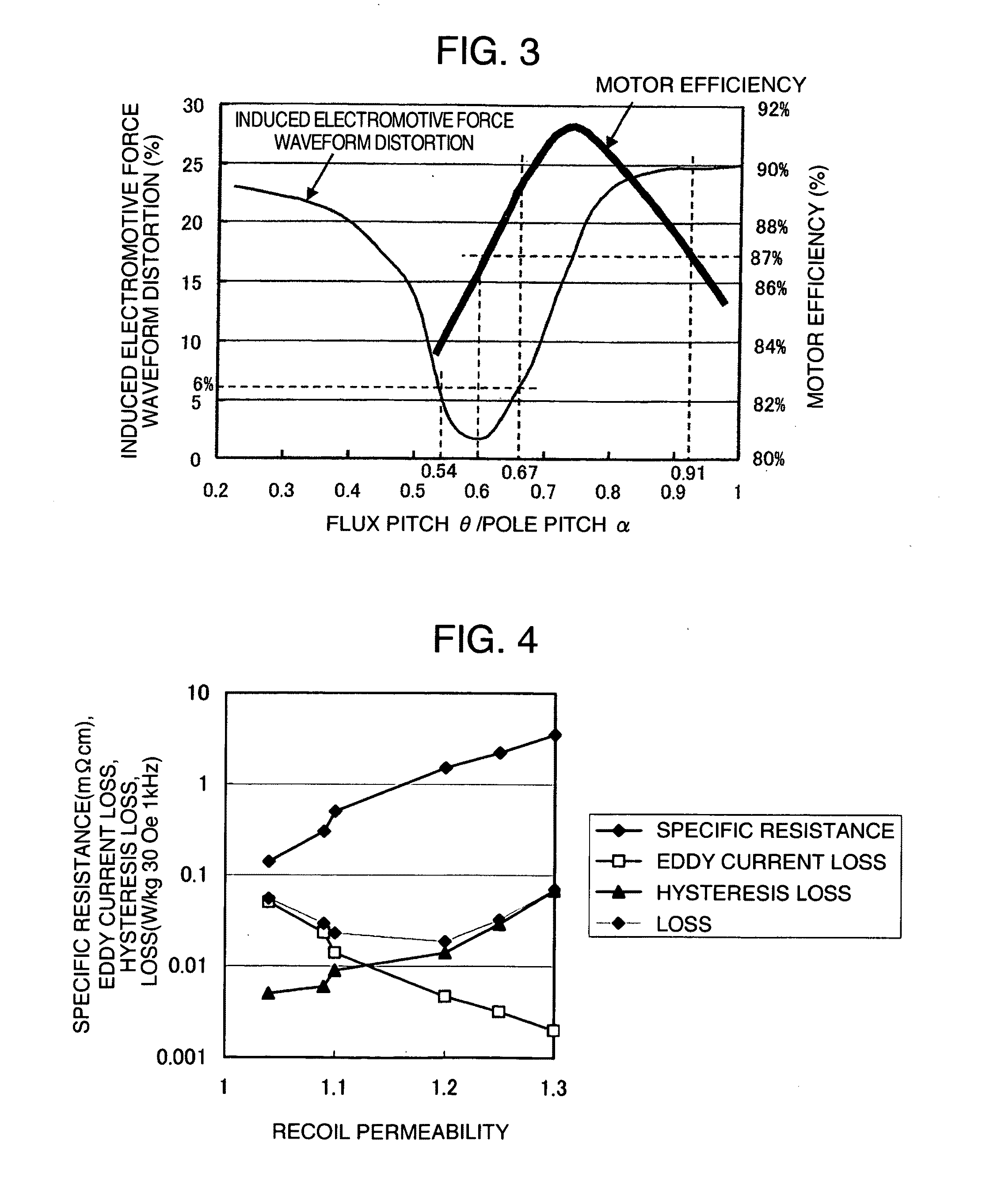Self starting permanent magnet synchronous motor
- Summary
- Abstract
- Description
- Claims
- Application Information
AI Technical Summary
Benefits of technology
Problems solved by technology
Method used
Image
Examples
example 1
Explanation of Self-Starting Permanent Magnet Synchronous Motor
[0054]FIG. 1 shows a radial cross-sectional view showing an example of a permanent magnet type synchronous motor according to the present invention.
[0055]In FIG. 1, a self-starting permanent magnet synchronous motor 20 comprises a stator 8 and a rotor 1.
[0056]The stator 8 has a stator iron core 9, plural (24 in the drawing) slots 10 formed therein, and teeth 11 divided by the slots 10. Armature windings 12 comprising U-phase windings 12A, V-phase windings 12B and W-phase windings 12C are wound by distributed winding with the same phase distributed in the plural slots 10.
[0057]By configuring as described above, when the armature windings 12 are supplied with a fixed frequency AC voltage, the rotor 1 can be activated and accelerated as an induction motor, and then it becomes possible to perform a constant-velocity drive as a synchronous motor.
[0058]FIG. 2 is a radial cross-sectional view of a rotor of a synchronous motor a...
example 2
[0080]A DyF3 or TbF3 layer is formed on Nd2Fe14B magnetic particles having a high residual magnetic flux density to which a high magnetic coercivity provision element such as Dy, Tb, Pr or the like is not added. Thus, a high residual magnetic flux density and a high magnetic coercive force can be achieved. A cast ingot is produced by dissolving an alloy having a composition similar to Nd2Fe14B according to a high frequency dissolving method. The ingot is formed into 1 to 10 μm powder by a pulverizer. To form a fluorine compound layer on the powder surface, gelatinous DyF3.XH2O or TbF3.XH2O is subjected to centrifugal separation. A solvent removed processing liquid is mixed with the NdFeB powder, the solvent is evaporated from the mixture, and hydrated water is evaporated by heating.
[0081]The powder is subjected to horizontal magnetic field pressing or vertical magnetic field pressing to orient the magnetic particles in a magnetic field of 0.5 T to 1 T, sintered in inert gas or in va...
example 3
[0085]Quenched powder mainly composed of Nd2(Fe, Co)14B is produced as NdFeB-based powder, and a fluorine compound is formed on the surface of the obtained powder. The quenched powder may contain amorphous. To form DyF3 on the quenched powder surface, Dy(CH3COO)3 is dissolved as a raw material in H2O, and HF is added. The addition of HF produces gelatinous DyF3.XH2O. It is subjected to centrifugal separation to remove the solvent, and it is mixed with the NdFeB powder. The solvent is evaporated from the mixture, and hydrated water is evaporated by heating. The formed fluorine compound layer having a film thickness of 1 to 1000 nm was examined by XRD. As a result, it was found that the fluorine compound film was comprised of DyF3, DyF2, DyOF or the like.
[0086]The magnetic powder having a particle diameter of 1 to 300 μm is heated while preventing it from being oxidized at a temperature of less than 800 degrees C. which is a heat treatment temperature at which the magnetic properties ...
PUM
| Property | Measurement | Unit |
|---|---|---|
| Grain size | aaaaa | aaaaa |
| Grain size | aaaaa | aaaaa |
| Fraction | aaaaa | aaaaa |
Abstract
Description
Claims
Application Information
 Login to View More
Login to View More - R&D
- Intellectual Property
- Life Sciences
- Materials
- Tech Scout
- Unparalleled Data Quality
- Higher Quality Content
- 60% Fewer Hallucinations
Browse by: Latest US Patents, China's latest patents, Technical Efficacy Thesaurus, Application Domain, Technology Topic, Popular Technical Reports.
© 2025 PatSnap. All rights reserved.Legal|Privacy policy|Modern Slavery Act Transparency Statement|Sitemap|About US| Contact US: help@patsnap.com



